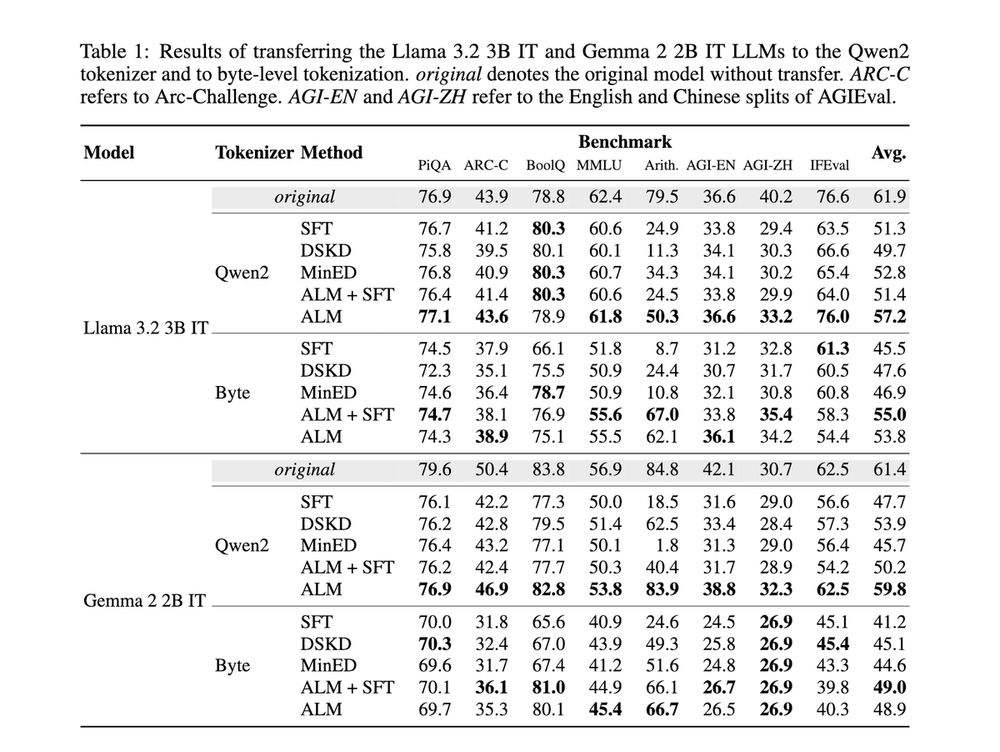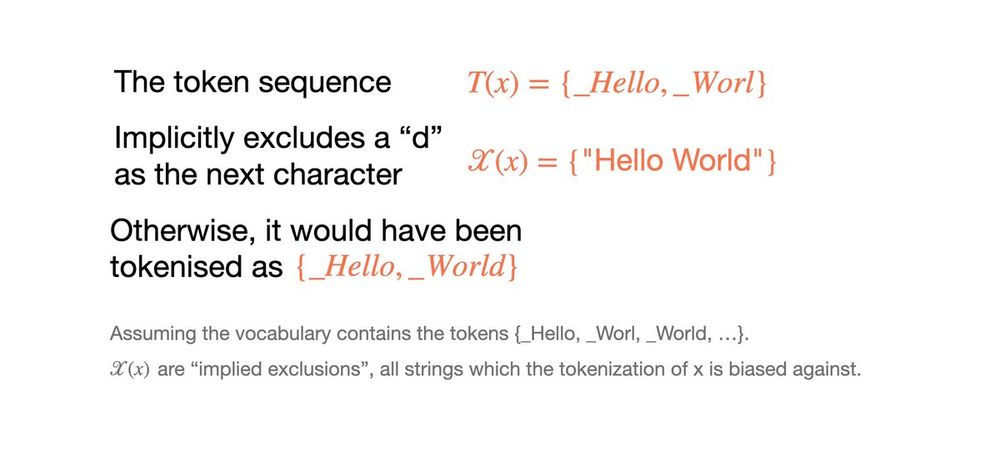We test this by distilling a large maths-specialized Llama into a small Gemma model.🔢

We test this by distilling a large maths-specialized Llama into a small Gemma model.🔢
This would not be possible if they had different tokenizers.
We try ensembling Gemma, Llama and Qwen. They perform better together than separately!🤝

This would not be possible if they had different tokenizers.
We try ensembling Gemma, Llama and Qwen. They perform better together than separately!🤝
1️⃣Tokenizer transfer: the teacher is the model with its original tokenizer; the student is the same model with a new tokenizer.
Here, ALM even lets us distill subword models to a byte-level tokenizer😮

1️⃣Tokenizer transfer: the teacher is the model with its original tokenizer; the student is the same model with a new tokenizer.
Here, ALM even lets us distill subword models to a byte-level tokenizer😮
We thus develop a method to find chunks with low tokenization bias differences (making them *approximately comparable*), then learn to match the likelihoods of those✅

We thus develop a method to find chunks with low tokenization bias differences (making them *approximately comparable*), then learn to match the likelihoods of those✅
Due to tokenization bias, a sequence of subword tokens can leak information about the future contents of the text they encode.

Due to tokenization bias, a sequence of subword tokens can leak information about the future contents of the text they encode.
We lift this restriction by first identifying comparable chunks of tokens in a sequence (surprisingly, this is not so easy!), then minimizing the difference between their likelihoods.

We lift this restriction by first identifying comparable chunks of tokens in a sequence (surprisingly, this is not so easy!), then minimizing the difference between their likelihoods.
With ALM, you can create ensembles of models from different families, convert existing subword-level models to byte-level and a bunch more🧵

With ALM, you can create ensembles of models from different families, convert existing subword-level models to byte-level and a bunch more🧵

